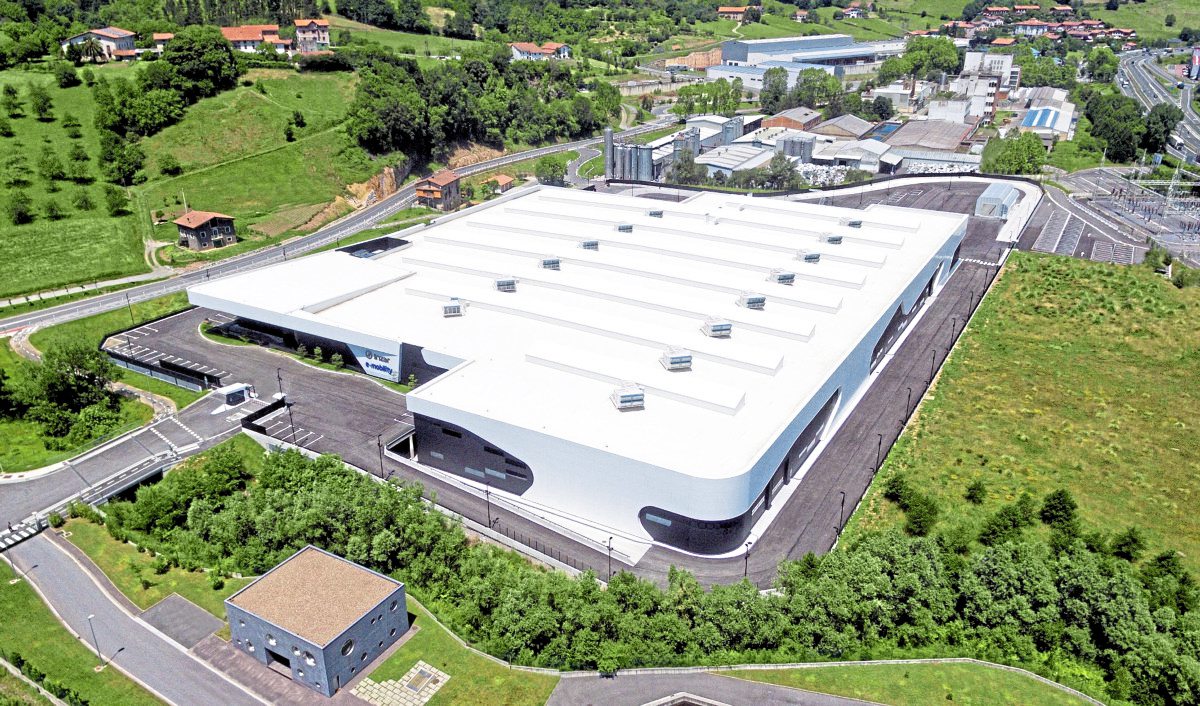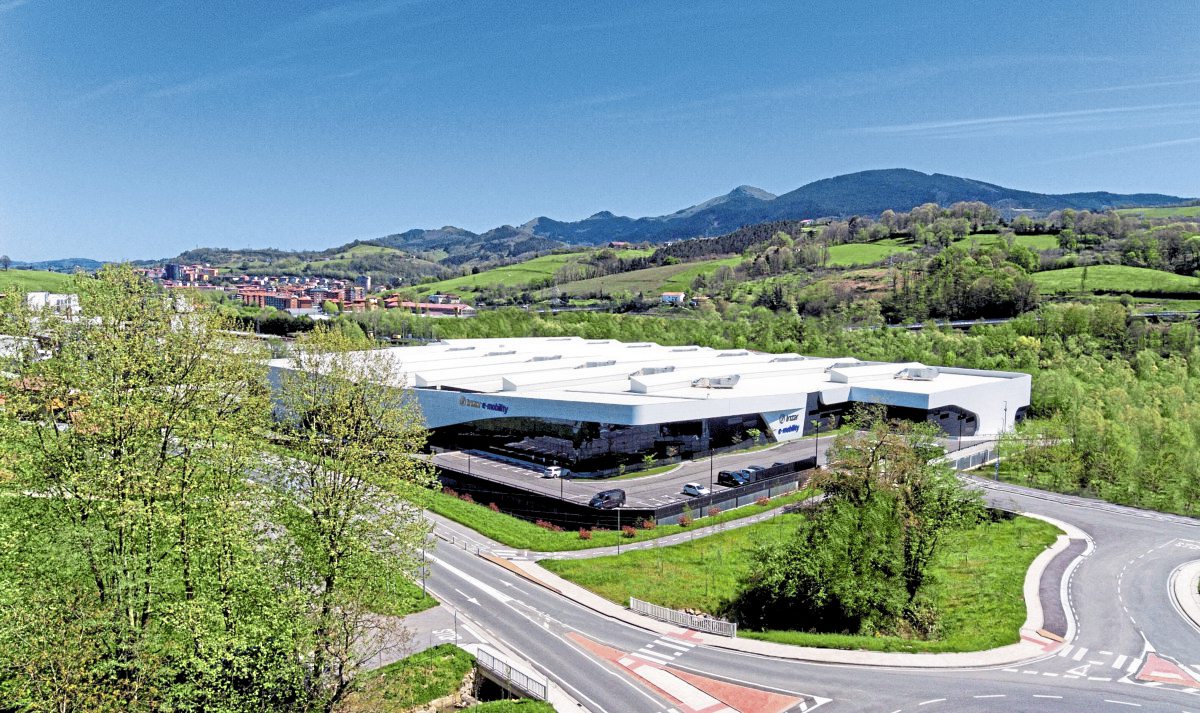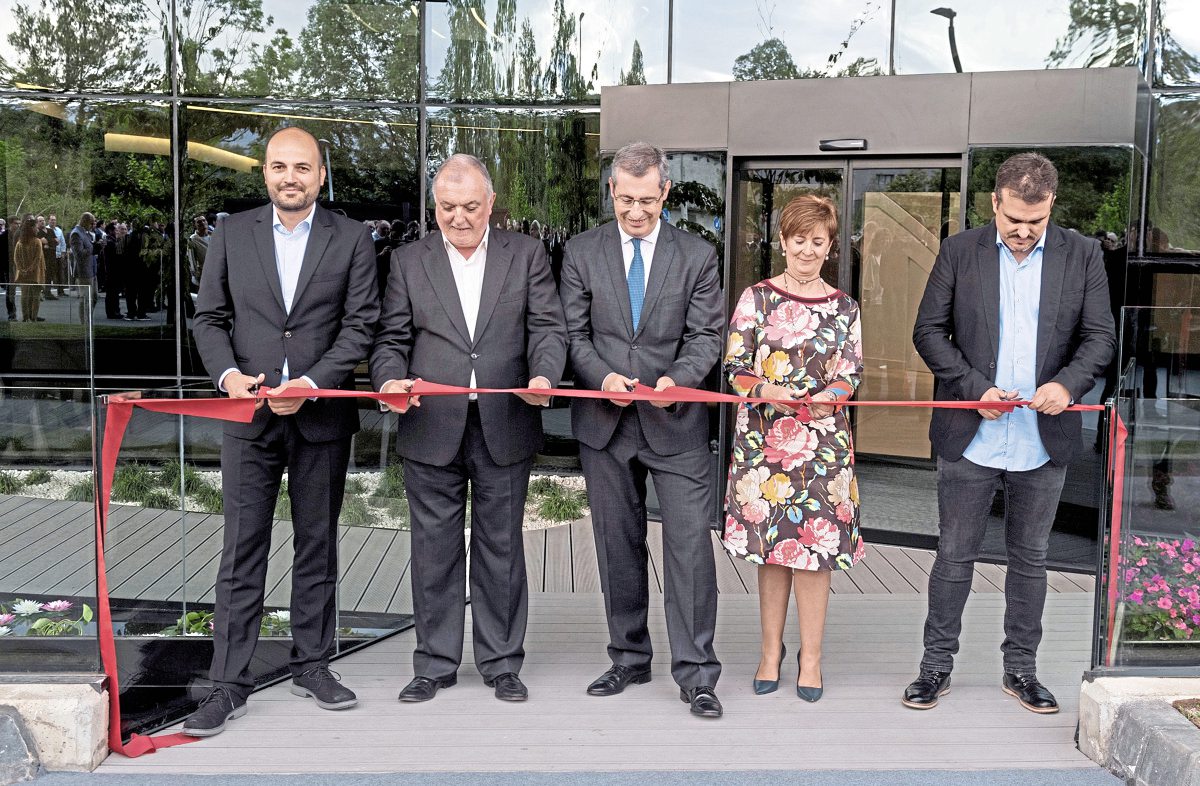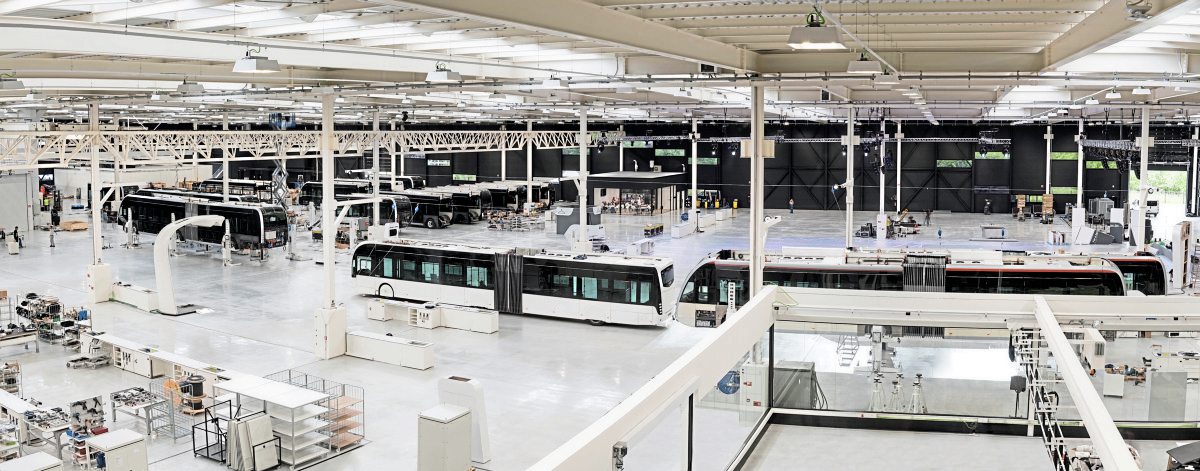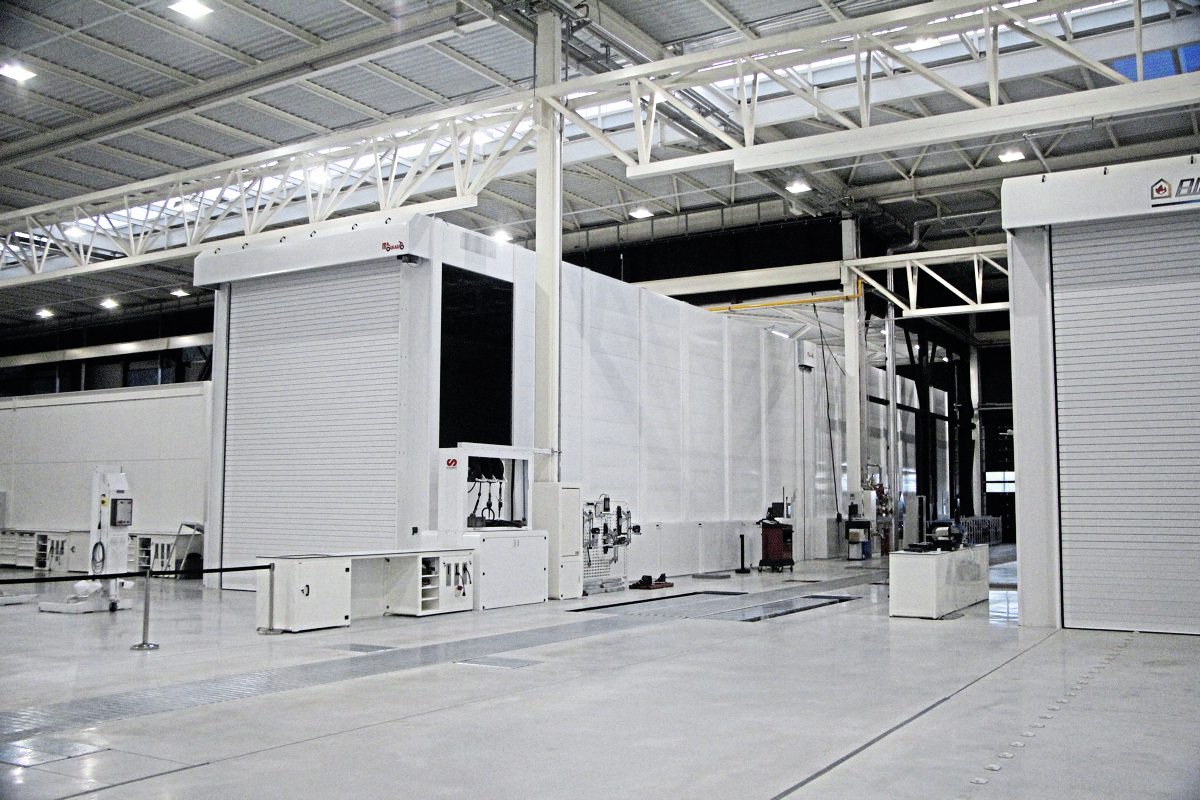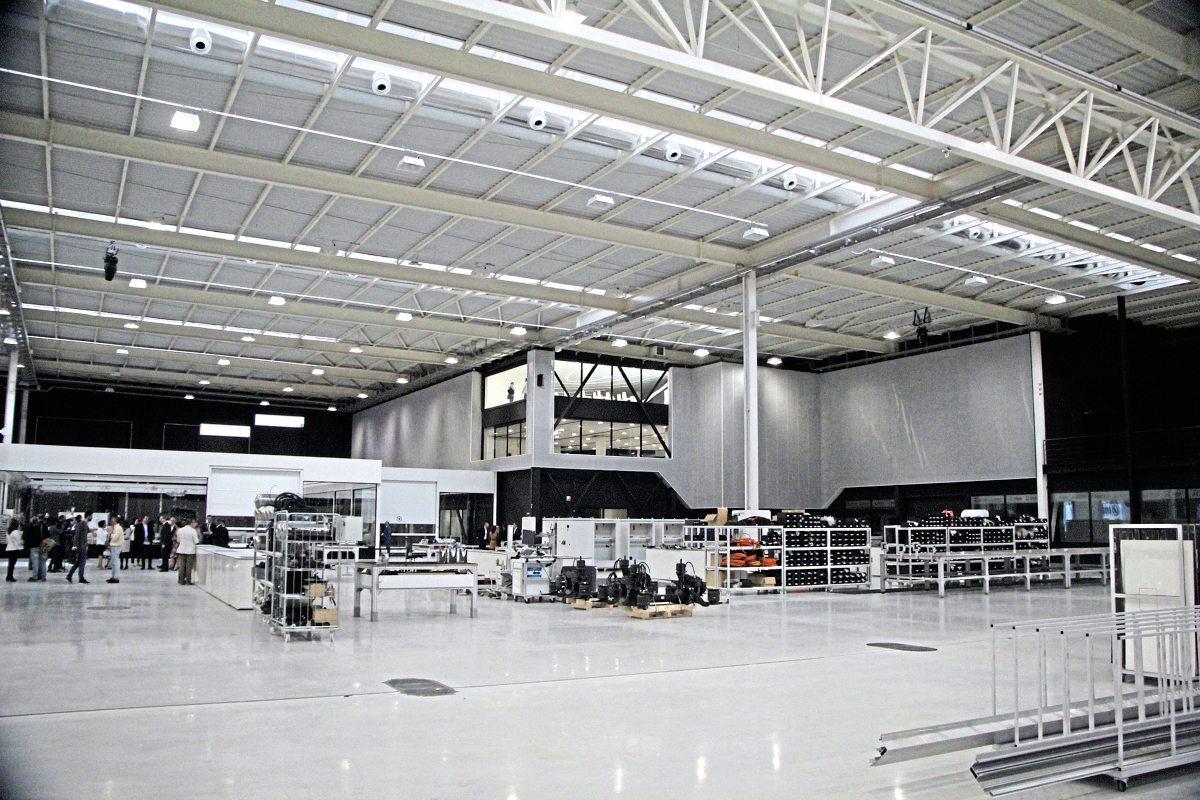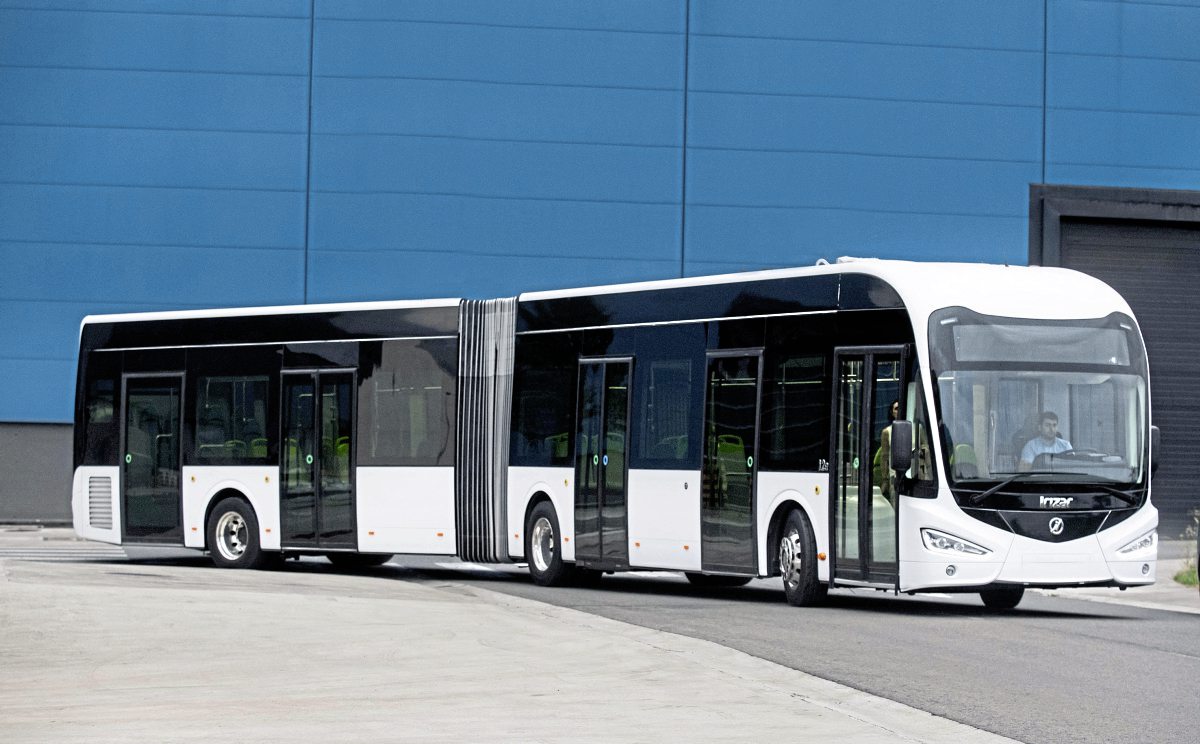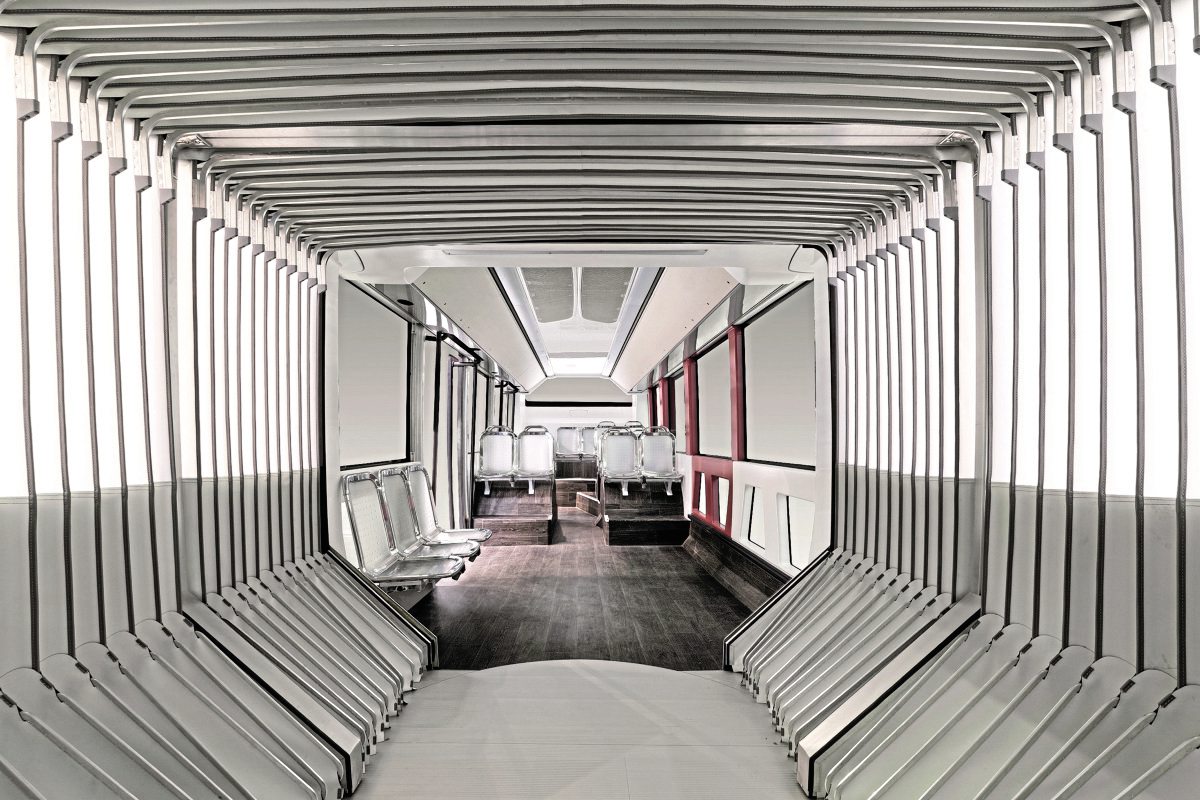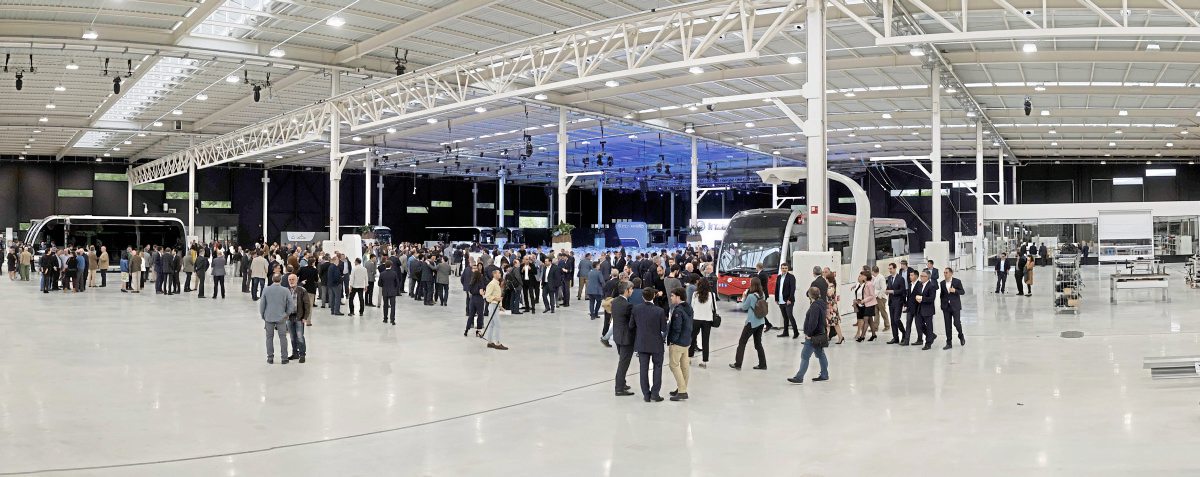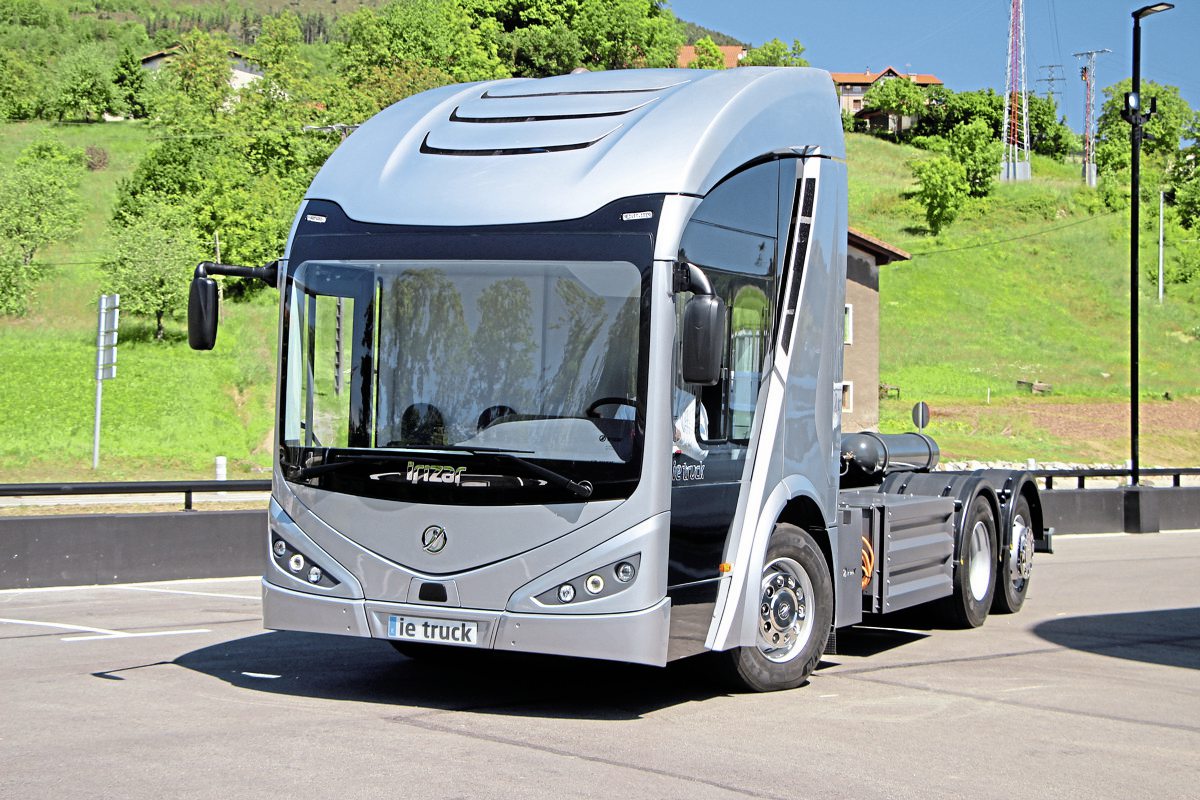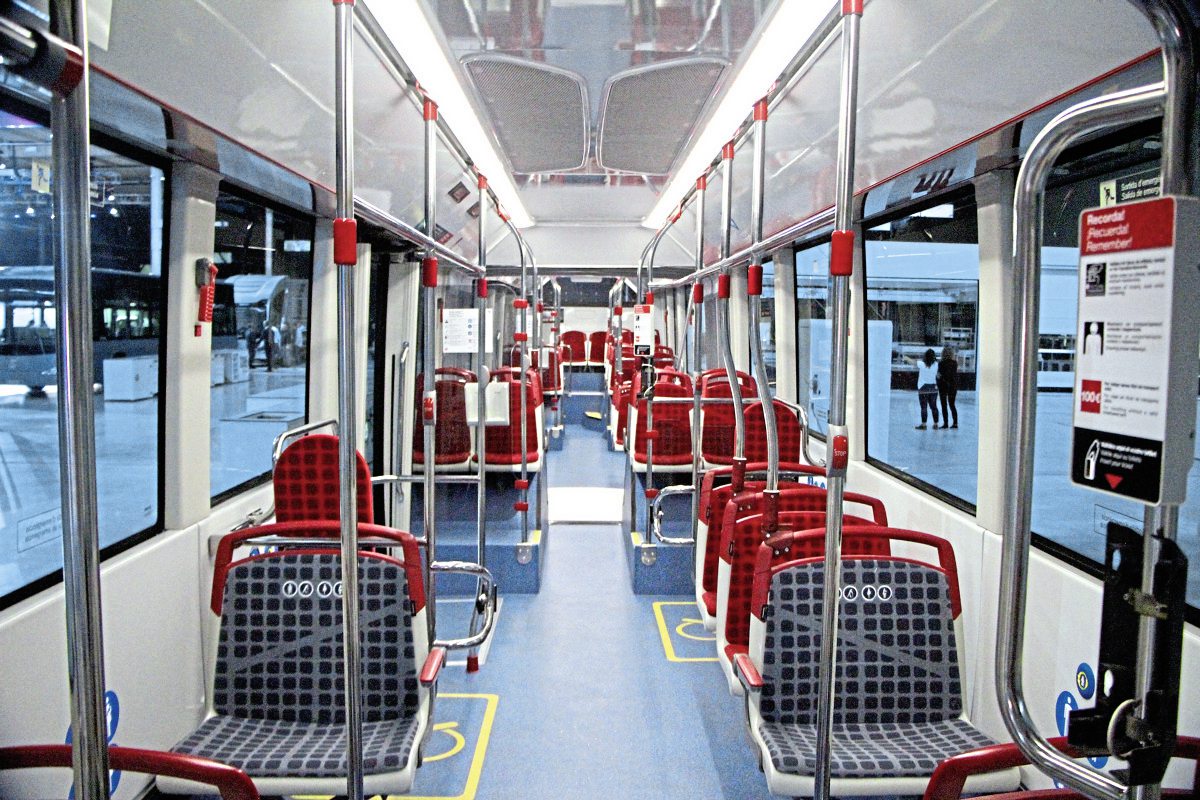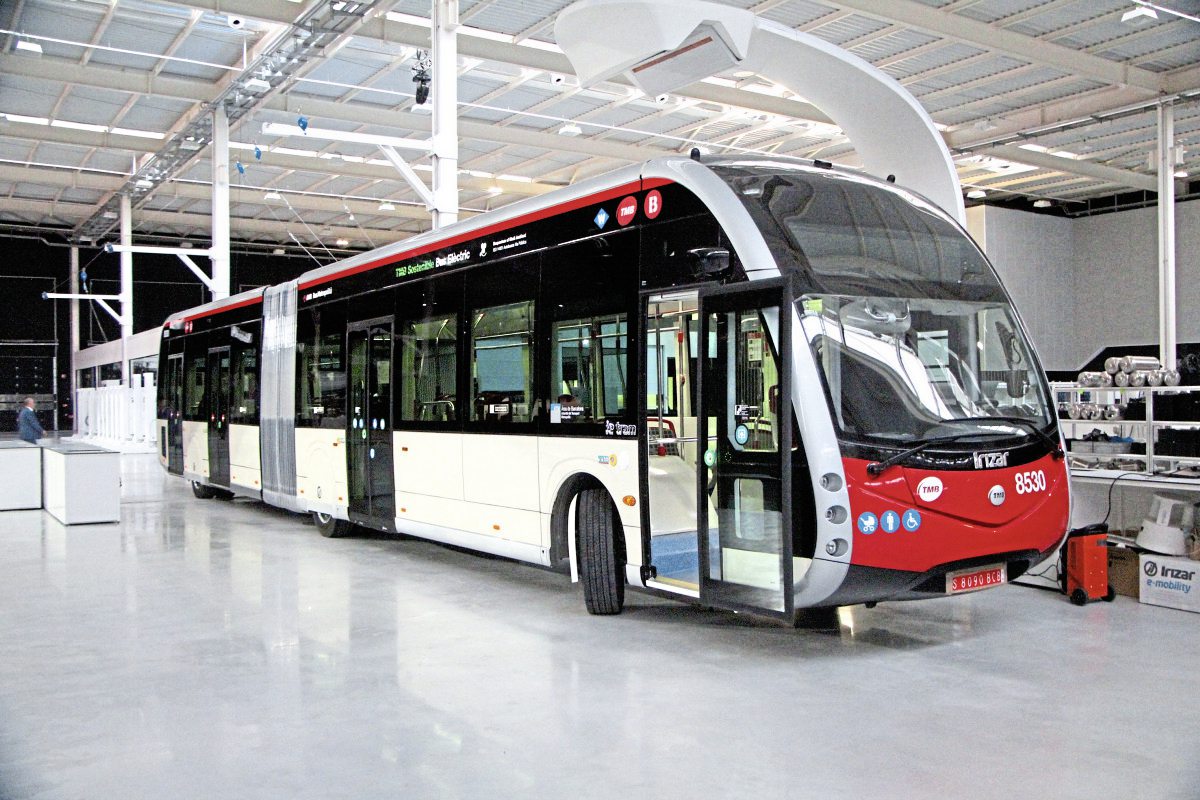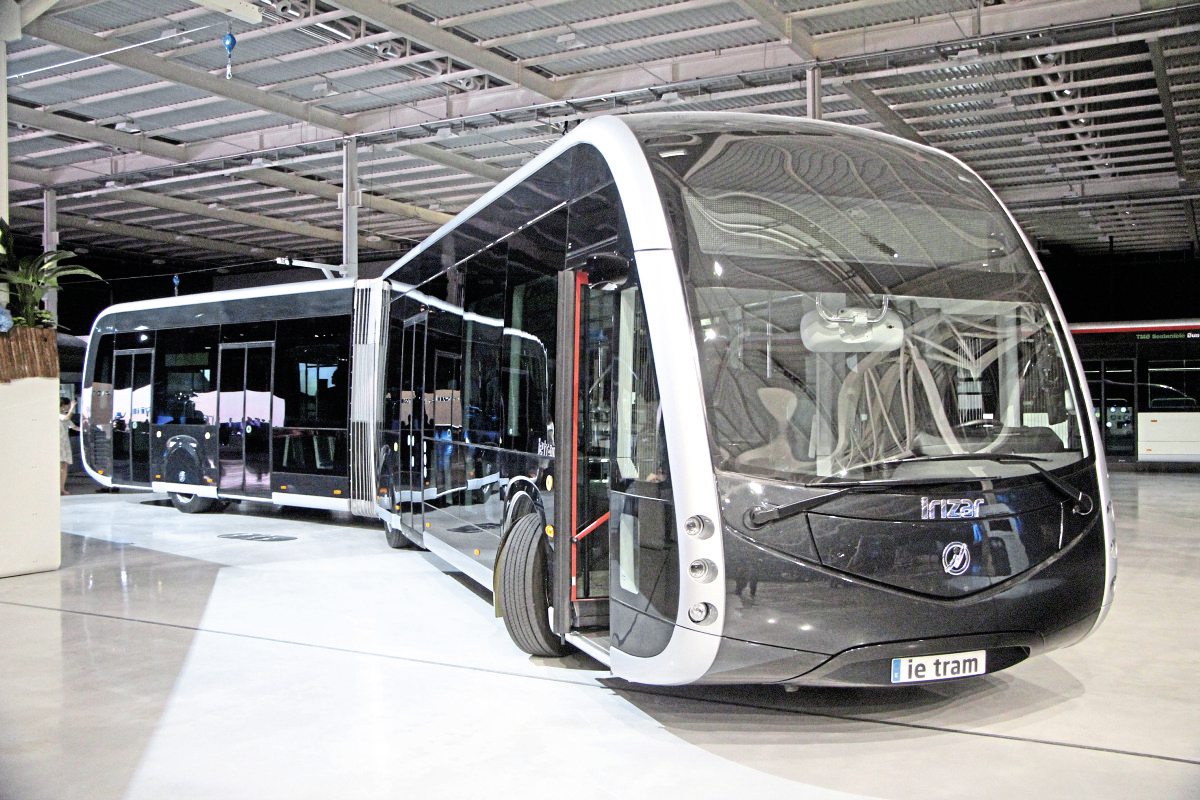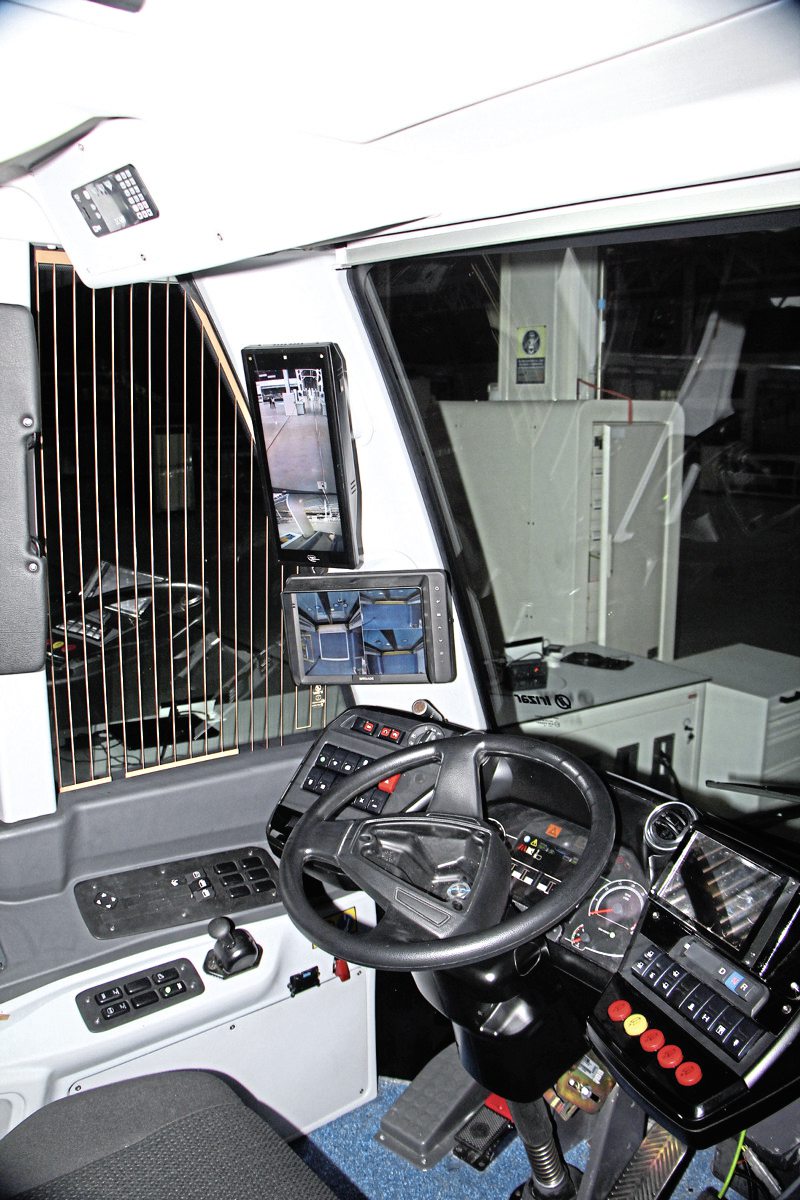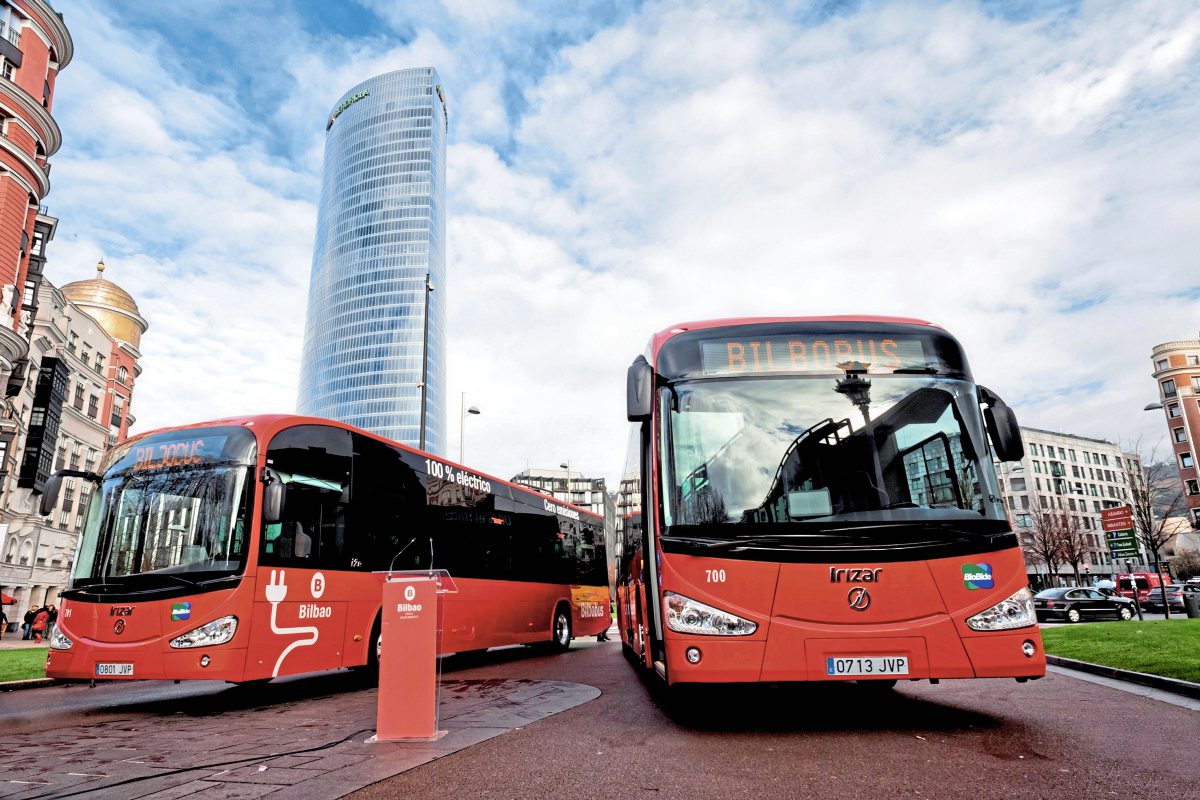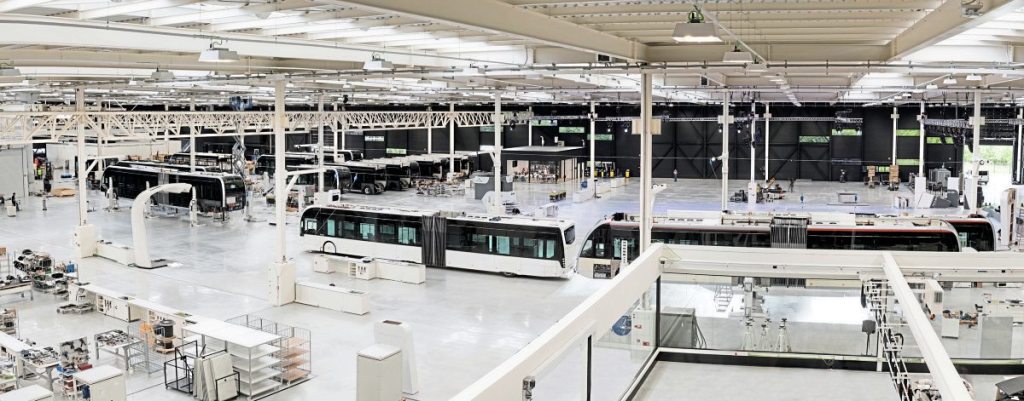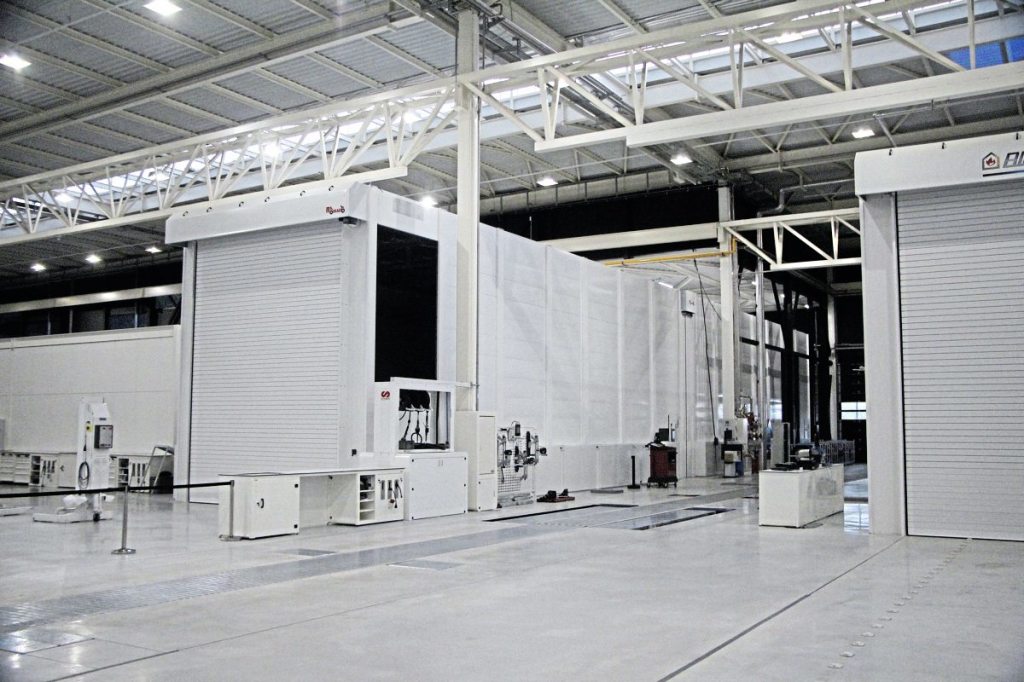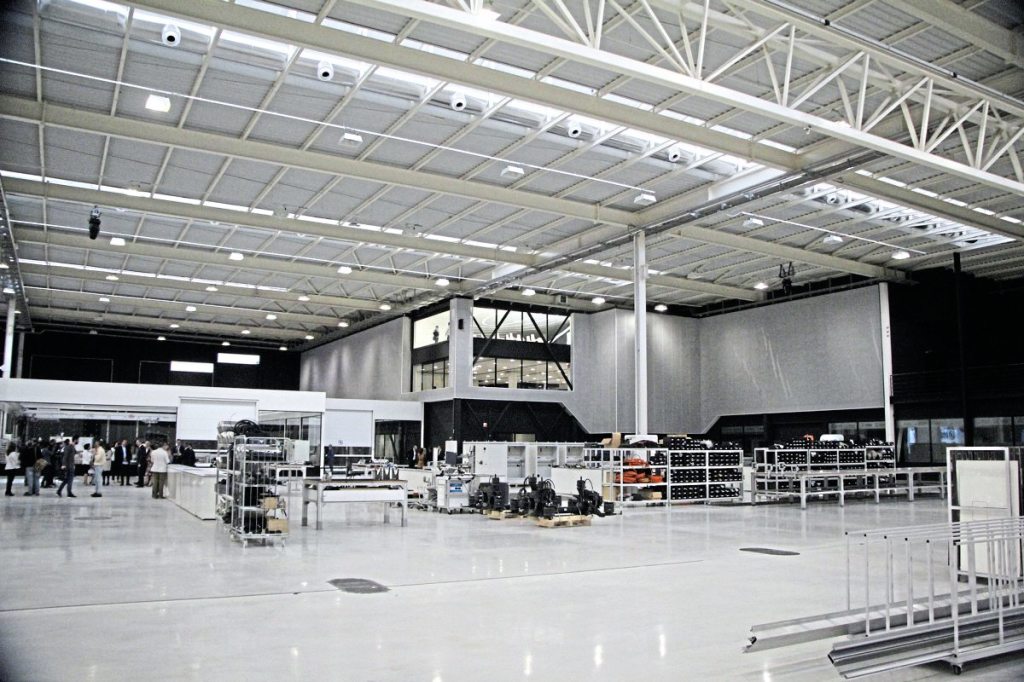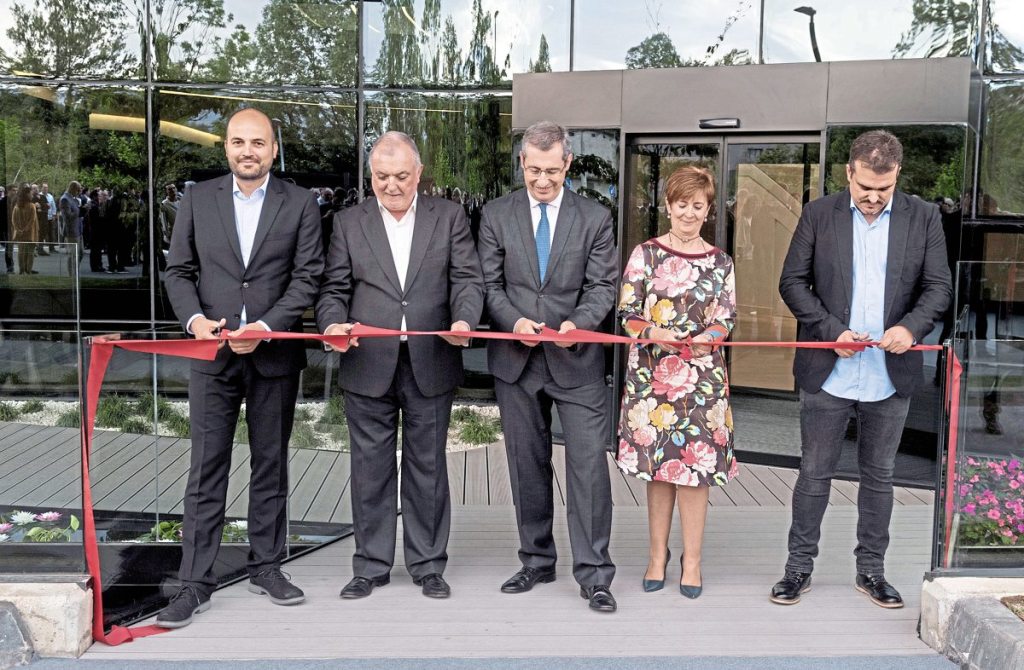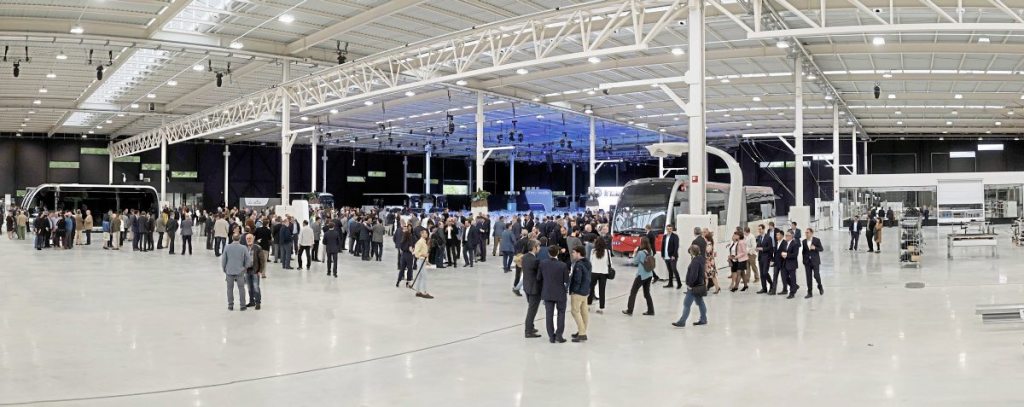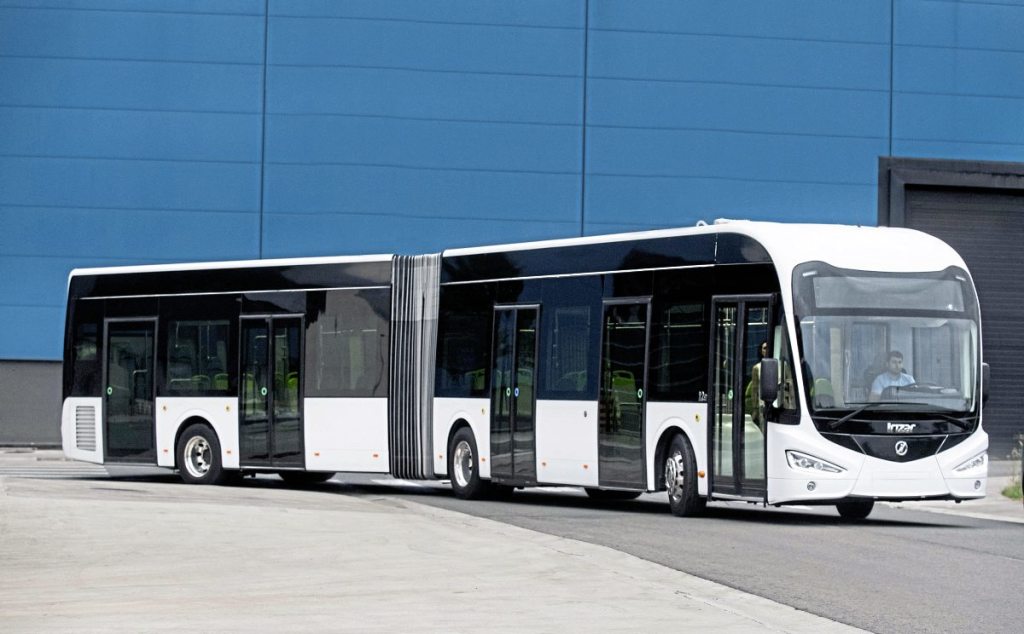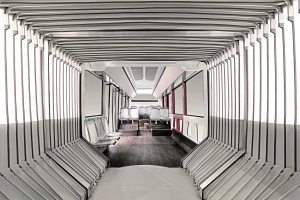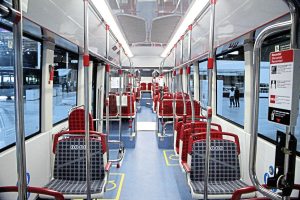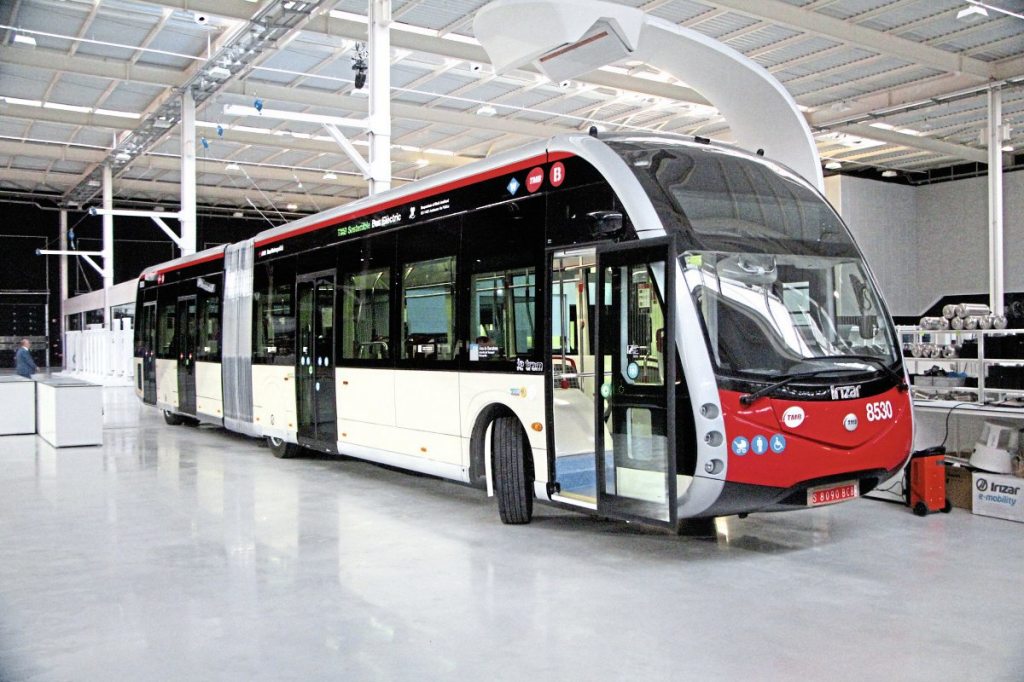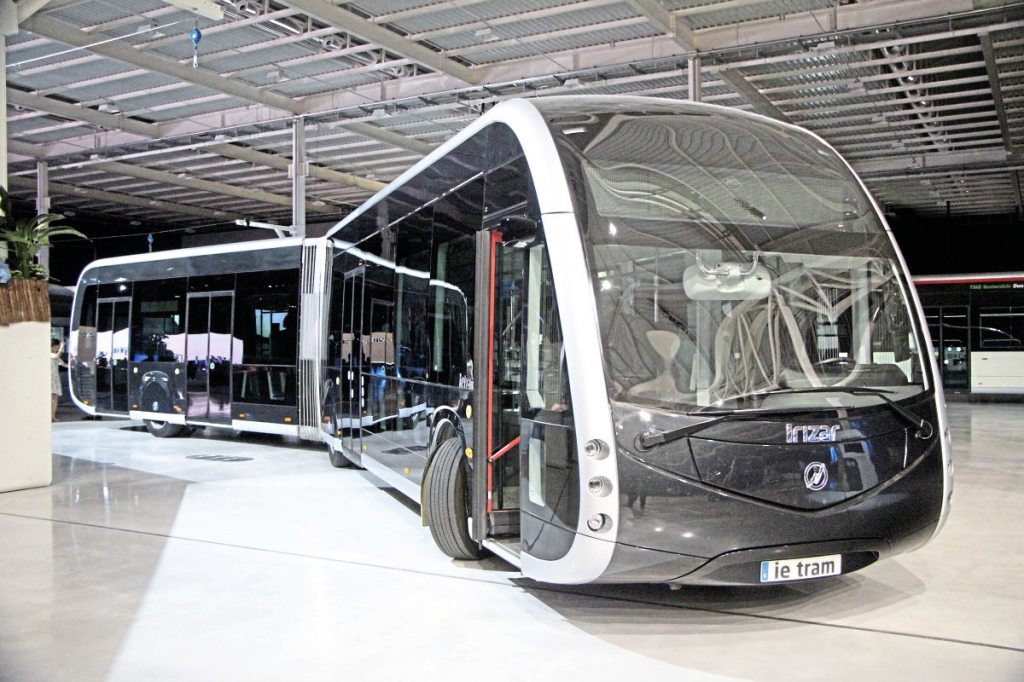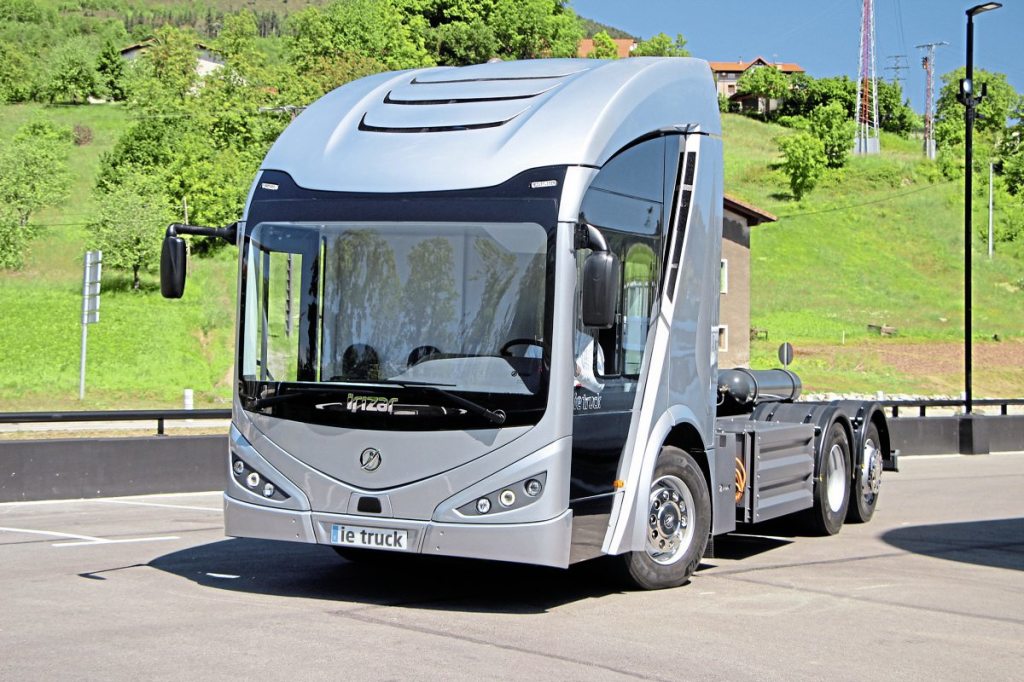Irizar opens new e-Mobility plant
Electric vehicle site opening heralds ‘new era of electromobility’
In the latest stage of a diversification strategy it started in 2009, Irizar has officially opened the new plant at Aduna in northern Spain. The site is home to Irizar e-Mobility, the seventh business within the Group.
Here it is building its growing range of electric vehicles, employing a very high degree of in-house developed technology. Having only produced its first electric bus as recently as 2013, it used the occasion to surprise many by unveiling another completely new product; the first ieTruck.
New plant
Designed to externally reflect the futuristic nature of the product and the company’s ambitions, with angular dark sections on a mainly white structure, the new plant occupies 18,000 square metres of a 36,000sqm site. It was completed last year and has been producing vehicles and components since then but this was the official opening with work on several different orders evident. It has the potential for 1,000 vehicles a year but is currently turning out one every two days with that set to increase to one a day from September.
A €75m investment, the intention from the outset was to make it an ecologically sustainable place where people wanted to come to work. One aspect of this is how light the interior is, with white surfaces and clever use of available light by means such as north light windows. It is A rated for energy efficiency with LED lights inside and out, touch controls in each room, a flat floor without contraction joints and induction-welded sheet roofing. All of the building’s facilities as well as those of the production process are centrally controlled, including: heating, air conditioning, lighting, pneumatics and the paint booths. Heating utilises surplus steam from an adjacent factory. Modern paint bays include one that is 26m long and capable of taking bi-articulated vehicles.
As well as test benches inside the plant, to the rear of the factory, surrounding the car park, is a test track incorporating a variety of surfaces on which products are tested. Spotlessly clean throughout, the plant houses not only the assembly of vehicles but also the manufacture of the components that go in them.
Chassis are in stainless steel while the body structure is bolted aluminium using an Irizar design made by a sub-supplier.
The latest equipment is at the disposal of the workforce and swivelling jigs are in place to ensure good ergonomic access during the assembly process. As is normal, the highest value components are installed last. Build time will be around 30 days once a rate of one bus a day is reached, after which there is preparation and pre-delivery which adds up to 15 days, so total delivery time from start of build to delivery will be around 45 days.
At present, 150 people are employed, a figure that will increase to 200 by the year end and is predicted to reach between 300 and 500 over the next five years. The average age of technicians is around 26, something that is extremely unusual in Europe but quite common in China and Turkey.
Ceremony
Although we had toured the plant earlier in the day, the main launch was celebrated at a gala evening within the factory with around 400 invited guests. Speeches, presentations from customers and dealers, drive-past stage appearances of the main eMobility models, testimonies from apprentices, dancing, a trapeze act, singers and an excellent meal were all part of the mix.
Irizar MD, Jose Manuel Orcasitas, talked of the jobs and wealth the new plant would create, the importance to Irizar of its strategy change nine years previously, its commitment to industrial diversification, and the process of turning weaknesses into strengths, adding: “In my heart I am very surprised, happy and proud of it.” He said Irizar has listened to customers and wanted to meet their needs. It had enabled the business to become a benchmark in the premium sector. Saying that exports represented over 80% of sales, he predicted a turnover exceeding €700m in 2018. In conclusion he thanked Irizar’s employees for ‘the great effort made by the many people in the group’ and thanked customers for being there.
Hector Olabegogeaskoetxea, head of the Irizar eMobility business, said that when the decision to go to eMobility was taken it had looked risky, but that it had now been proven to be the right one. Orders were generally being won on the basis of supplying turnkey projects and all new products and systems will feature 100% Irizar technology. Alongside the technological development the business has been developing a sales team across Europe.
Many UK operators would have found one of the presentations particularly pertinent, as Patrick Kenny of the Irish dealership, Westward Scania, asked everyone to raise their glasses to remember the late Jose Aizpuru, who did so much to establish the Irizar brand not just in Britain but across the world.
Concluding the proceedings, Export Director, Gotzon Gomez, said, ‘We hope this is the beginning of a new period, an era of electromobility.’
Products
In recent months the designations of the electromobility range have been simplified so that everything is now branded ieBus, ieTram or ieTruck. Thus what was previously the i2e will now be an ieBus. In certain lights and from a distance this does look like leBus or leTram which will no doubt be popular in France where Irizar has been doing very well for bus orders of late. The rebranding makes no difference to the range offered in fact there are new models added to it. For the bus market there are 10.8m, 12m and articulated 18m versions in addition to which there is the 18.73m ieTram which has exactly the same frame as the 18m articulated bus except for the sloping front, rear and optionally the glazed lower side panels. Although called a tram, the ieTram is really a bus as it does not run on rails, the nomenclature being a way of emphasising its suitability for schemes such as BRTs without the enormous costs. A 12m version of the ieTram is promised, but none have yet been built. Also promised is a bi-articulated electric bus which one presumes would be available to ieBus or ieTram specification.
With its chrome edging band and wheel-mounted spats, the new ieTram is a stylish looking vehicle intended for BRT operations and as an alternative to a tram system at a more affordable price. An example was present at the launch and this was said to be the first vehicle to be certified to operate with a digital camera and screen system rather than conventional mirrors. Based on regulation A107 (eight people per sqm) it can have up to 115 passengers. A maximum of eight doors is possible (five nearside/three offside) though the front door has to be a single width unit because of the front slope, unlike the articulated bus version. The interior is attractive with a particularly spacious articulation section offering headroom of around two metres. Irizar believes this area will appeal to students and young people. Priced at €800,000 for the specification shown, it will be participating in the Bus Euro Test event in Zagreb at which the 2019 International Bus of the Year will be decided. A fuller report on it will be presented at that time.
There are already around 100 Irizar electric buses in operation and we were told that by the year end there will be around 150 electric vehicles delivered.
Technology
Irizar is offering customers a variety of charging options based entirely on in-house technology, though it can also supply vehicles to run using systems from other manufacturers. The two key technologies are fast and slow charging, each of which requires different types of batteries and charging infrastructure.
While touring the plant we were shown the 600m2 area where the batteries are manufactured using cells supplied. Equipment here included a white laser welding facility. There are two types of battery modules. The first is the energy unit for slow or depot charging which makes use of pouch cell NMC batteries. Within each sub-module there are 24 pouch cells and 16 sub-modules go into each water-cooled battery pack. A 12m city bus will normally have four of these giving a capacity of 300kWh but this can be increased to five packs if energy demand is expected to be high. Life expectancy of the modules is around 3,000 cycles, equivalent to about seven years.
The second battery type is the power pack for fast/opportunity charging which uses smaller prismatic cells. In this case the battery medium is LTO (Lithium Titanite Oxide). These units have a 16,000 cycle life and because they are micro-charged at between 50% and 85% charge they have a life expectancy of around 15 years. Twelve sub-modules go into each 500kg battery pack delivering 30kWh. Most two axle buses have three battery packs (90kWh) but you can have four (120kWh), while four packs is standard in articulated buses with the option of five.
Irizar says that its electric buses offer a range of between 200km and 220km at 15-17km/h, enabling a 14-16 hour working day.
In the first vehicles supplied, use was made of the Siemens Alfa system but Irizar now offers a completely in-house solution with systems developed by the group’s Alconza subsidiary which specialises in electric motors and generators. Use is made of ZF axles, although these are modified to give a greater payload capacity. I was told that 65% to 70% of the bus by value was manufactured in house.
New truck
Bus & Coach Buyer doesn’t usually cover truck events and I was not aware when I accepted the invitation that this would be one. Irizar had promised that it would also produce other vehicles but I had anticipated this being further ahead.
It was a surprise when we were shown the very first ieTruck, based on the same technology as that employed in the ieBus and ieTram using Lithium Ion batteries (for overnight charging) but with the additional option of a CNG range-extender from FPT. A pantograph charging option is also available. Around 8m long, it has a 28-tonne GVW, an 18-tonne payload and comes with short or long overhang options. The example shown was a 6×2 with the second axle driven and the third a tag unit, though other options will be offered. It is Irizar’s intention to offer it to bodybuilders as a chassis.
It looks quite unlike other trucks because it has a very low cab floor, and a 370mm one step entrance. The launch vehicle is set to be bodied as a refuse collection truck, Irizar having worked with the bodybuilder for the last three years to develop it. Such applications have high electric power requirements because of the constant stop-start and the need to compress the rubbish collected, hence the range extender (from FPT) which Irizar envisages only being used when the truck is travelling to and from the disposal site. It should run emission free for all or most of the time it is collecting in urban areas, with an electrical autonomy span of four hours.
Commercial production is set to begin in 2019. Hector Olabegogeaskoetxea believes that the ability for local authorities to source buses and trucks from one source and charge them using the same equipment at different times of day will appeal to local authority purchasers as well as airports.
UK
Irizar UK has had a full-time bus salesman since last December when Shaun Millar was appointed Business Development Manager – Bus. He is rapidly learning the business with the expert assistance of Mike Weston, Irizar’s Strategic Bus Advisor, who has been working in a consultancy role since leaving Transport for London where he was Director of Buses. Also new is Gradyn Thompson who has a huge amount of bus experience, much of it with Maynes of Manchester. His role is that of Technical Support Manager – Bus.
All of the new products including the ieTram and ieTruck will be joining the existing bus range in the UK. Three Irizar electrics are currently running in the UK: two 12m i2e buses on TfL’s 108 route and a 10.8m i2e that was first seen at last year’s Birmingham show in TfL red but has since been repainted in a blue scheme and is operating on demonstration duties at Heathrow Airport. All three have the Sodium Nickel batteries, though any future sales will be equipped with the latest Lithium Ion batteries that are already employed in articulated ie models.
The potential in the UK is likely to be greatest in those niches where purchasers are seeking high capacity, BRT quality styling or a complete package approach. Considerable interest is reported with airports high among the target markets.
Although Irizar does not believe there is a long-term future for diesel hybrids in city bus applications, it does see one in interurban coach applications and has been demonstrating an i4 equipped with a 6.7-litre Cummins unit in the UK. Fifty 15m examples are already running in Madrid. There remains talk of a nine-litre hybrid version linked with the ZF TraXon transmission, although if this does happen my understanding is that we will not see it before 2019.
Last word
Irizar was visionary in identifying the potential for electric commercial vehicles back in 2011. Since then it has moved swiftly to meet what it is confident will be a growing demand, rather more quickly than some of the best established European bus manufacturers.
While it has been preparing itself, other new players have emerged keen to exploit the market, notably those from China. In several countries, including the UK, these have already established dominant positions in mainstream bus markets. In Irizar’s favour are a number of points, one of which may be the fact that they are built in Europe, though this typically matters less in the UK than elsewhere.
Strong on styling, Irizar will also benefit from its willingness to specify in accordance with customer preferences as well as the ability to supply complete turnkey packages as a one-stop shop. Further appeal may come from the ability to supply trucks based on the same technology, though this is not likely to be a long-term advantage as others will be, and in some cases are already, looking to offer wider product portfolios.
